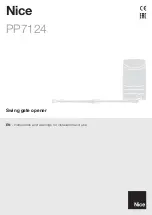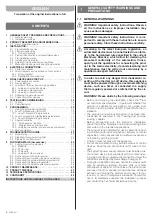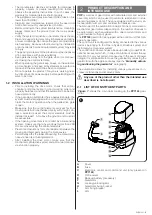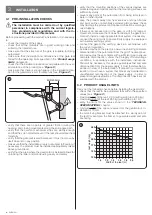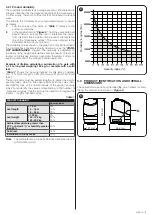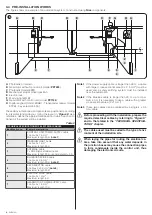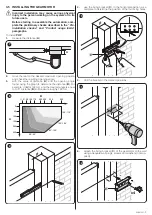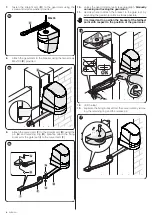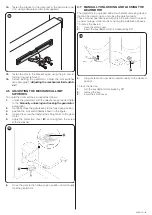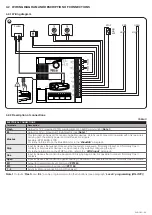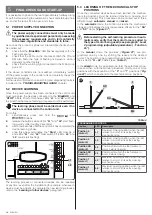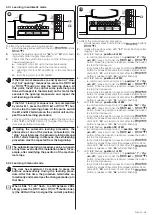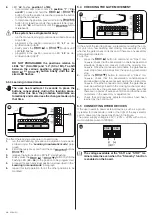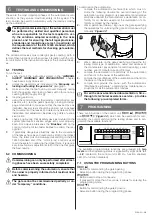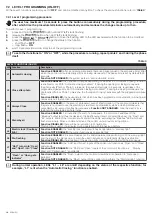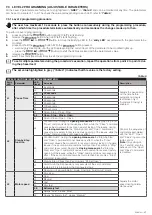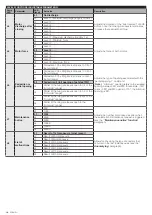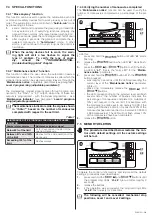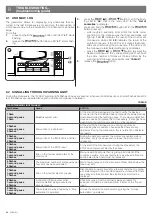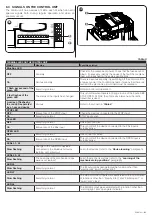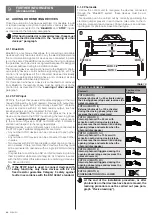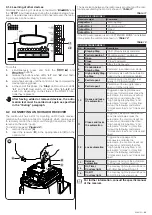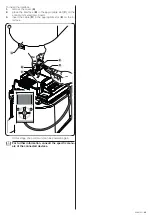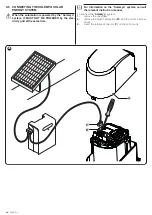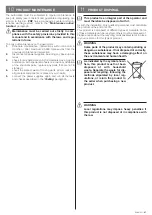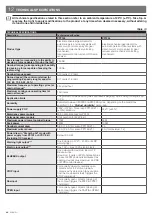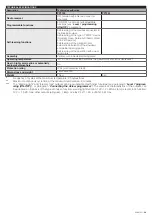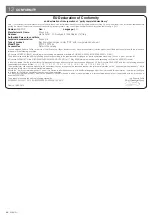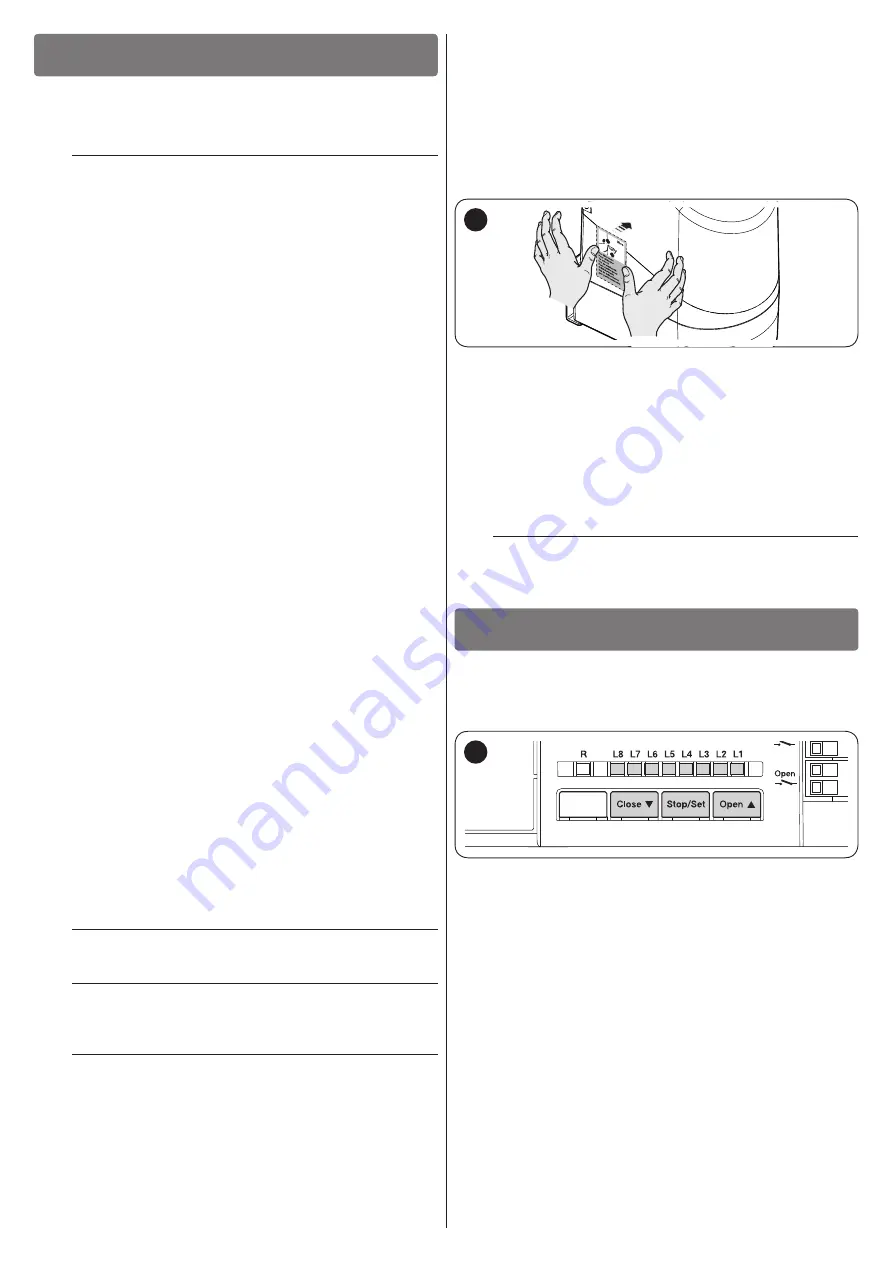
ENGLISH –
15
TESTING AND COMMISSIONING
6
6
TESTING AND COMMISSIONING
These are the most important phases of the automation’s con-
struction, as they ensure maximum safety of the system. The
test can also be used to periodically verify the devices making
up the automation.
m
Testing and commissioning of the automation must
be performed by skilled and qualified personnel,
who are responsible for the tests required to ver-
ify the solutions adopted according to the risks
present, and for ensuring that all legal provisions,
standards and regulations are met, in particular all
the requirements of the EN 12445 standard, which
defines the test methods for checking gate automa-
tions.
The additional devices must undergo specific testing, both in
terms of their functions and their proper interaction with the con-
trol unit. Refer to the instruction manuals of the individual devic-
es.
6.1 TESTING
To run the test:
1.
verify that all the instructions stated in the “
SAFETY WARNINGS AND PRECAUTIONS
” chapter
have been strictly observed
2.
unlock the gearmotor as indicated in the “
locking and locking the gearmotor
” paragraph
3.
make sure that the leaf can be moved manually during
both the opening and closing phases with a force not ex-
ceeding 390N (roughly 40 kg)
4.
lock the gearmotor
5.
using the control devices (transmitter, control button, key
selector, etc.), test the gate’s opening, closing and stop-
page movements to make sure that the leaves move as
intended. Several tests should be carried out to assess
the movement of the leaves and detect any defects in the
installation and adjustment, besides any points of exces-
sive friction
6.
check, one-by-one, that all safety devices mounted on the
system (photocells, sensitive edges, etc.) work properly.
Each time a device intervenes, the “
Bluebus
” LED on the
control unit will emit two faster flashes to confirm the rec-
ognition
7.
if potentially dangerous situations due to the movement
of the leaves have been prevented by limiting the impact
force, the latter must be measured according to the EN
12445 standard and, if the “motor force” control is used
to aid the system in reducing the impact force, it is neces-
sary to test various adjustments to find the one that gives
the best results.
6.2 COMMISSIONING
a
Commissioning can only be performed after all test-
ing phases have been successfully completed.
a
Before commissioning the automation, ensure that
the owner is properly informed of all residual risks
and hazards.
a
The gate cannot be commissioned partially or un-
der “temporary” conditions.
To commission the automation:
1.
compile the automation’s technical file, which must in-
clude the following documents: overall drawing of the
automation, wiring diagram, risk assessment and relative
solutions adopted, the manufacturer’s declaration of con-
formity for all devices used and the declaration of con-
formity compiled by the installer
2.
affix a permanent label or sign near the gate specifying
the operations for unlocking the gate and manoeuvring it
manually “
Figure
1
2
180°
33
3.
affix a data plate on the gate specifying at least the fol-
lowing data: type of automation, name and address of
the manufacturer (responsible for commissioning), serial
number, year of manufacture and CE mark
4.
compile the declaration of conformity of the automation
and hand it to the owner of the automation
5.
compile the User Manual of the automation and hand it to
the owner of the automation
6.
compile and provide the owner with the automation’s
“Maintenance schedule”, containing the maintenance in-
structions for all the automation’s devices.
l
For all the above-mentioned documentation, Nice –
through its technical assistance service – provides
the following: pre-completed forms.
PROGRAMMING
7
7
PROGRAMMING
There are 3 buttons on the control unit:
f
,
g
and
h
(“
Figure
”) which can be used both for com-
manding the control unit during the testing phase and to pro-
gramme the available functions.
SBS
OPEN
34
The available programmable functions are grouped into
two
levels
and their operating status is signalled by eight LEDs “
L1
... L8
” located on the control unit (LED lit = function enabled;
LED off = function disabled).
7.1 USING THE PROGRAMMING BUTTONS
f
–
Button for commanding the gate opening
–
Selection button during the programming phase.
g
–
Button used to stop a manoeuvre
–
If pressed for more than 5 seconds, it allows for entering the
programming mode.
h
–
Button for commanding the gate’s closure
–
Selection button during the programming phase.

